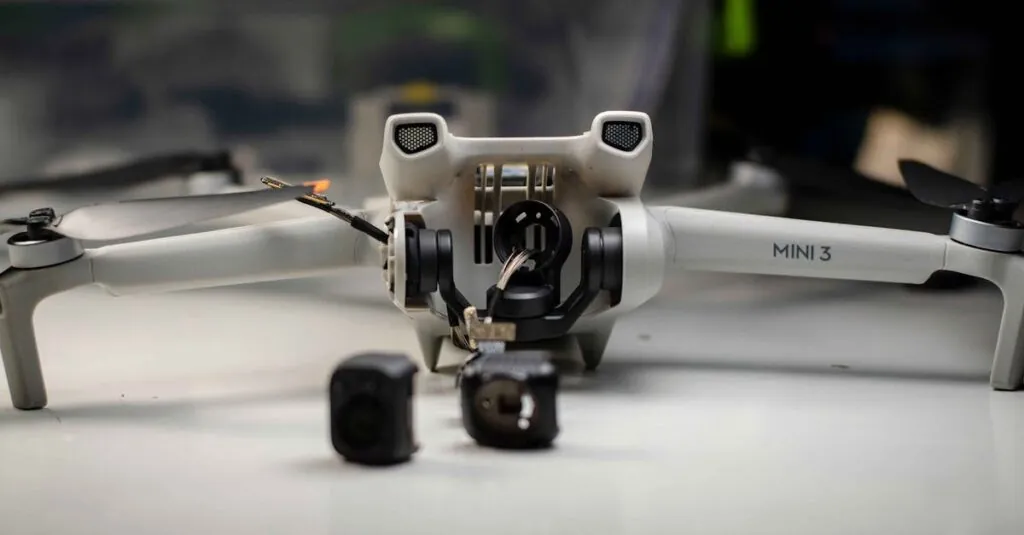In the world of industrial automation, SCADA hardware parts are the unsung heroes that keep everything running smoothly. Imagine a bustling factory where machines hum in harmony, all thanks to the reliable backbone provided by these components. Without them, chaos would reign, and nobody wants a scene straight out of a sci-fi horror movie.
From sensors that detect every little change to controllers that make split-second decisions, SCADA hardware is the glue holding modern industries together. It’s not just about wires and circuits; it’s about ensuring efficiency, safety, and a sprinkle of tech magic. So, buckle up as we dive into the fascinating world of SCADA hardware parts, where every piece plays a crucial role in the symphony of industrial operations. Who knew hardware could be this exciting?
Table of Contents
ToggleOverview of SCADA Hardware Parts
SCADA systems rely on several critical hardware parts. Controllers serve as the brain of the system, processing data from various sensors and executing commands. Sensors capture real-time data from the physical environment, such as temperature and pressure, relaying this information to the controllers for analysis.
Communication devices facilitate data transfer between controllers and the central system. These devices ensure seamless interaction, supporting both wired and wireless connections. I/O modules expand the system’s capabilities, allowing for the integration of multiple inputs and outputs.
Human-Machine Interfaces (HMIs) provide operators with visual representations of the system’s status. HMIs display data in an understandable format, making it easier to monitor processes and make decisions. Additionally, data loggers track historical information, enabling the analysis of trends over time.
Power supplies ensure that all components run effectively. They convert electrical energy to power the system, maintaining stability even during fluctuations. Enclosures protect sensitive hardware from environmental factors, enhancing reliability.
Backup systems contribute to system resilience. They maintain functionality in case of primary system failure, guaranteeing continuous operation. Accessory components, such as cables and connectors, play a vital role in establishing reliable connections between different hardware parts.
Each hardware part collaborates effectively, creating a cohesive and efficient SCADA solution. Understanding the roles of these components is essential in appreciating how they contribute to industrial automation.
Key Components of SCADA Systems
SCADA systems rely on various hardware components that ensure efficient industrial automation. Understanding each part enhances appreciation for their roles in operations.
Input/Output Modules
I/O modules serve as crucial interfaces between the SCADA system and field devices. They convert signals from sensors into a format the controller can process. Similarly, they relay control signals back to actuators. Various types of I/O modules exist, including digital and analog options, to accommodate diverse sensor and actuator requirements. Digital I/O modules handle on/off signals from devices, while analog I/O modules manage varying signal levels. These modules directly impact data accuracy and control response times, making them essential for operational efficiency.
Communication Interfaces
Communication interfaces connect different components within a SCADA system. These interfaces enable data transfer between controllers, sensors, and HMIs. Several communication protocols, such as Modbus, Ethernet/IP, and Profibus, enhance interoperability among devices. Each protocol has unique features suited for various applications. For instance, Ethernet-based protocols offer high-speed connections, while wireless options provide flexibility in installation. Ensuring reliable communication minimizes downtime, thus enhancing overall system performance.
Human-Machine Interfaces (HMIs)
HMIs play a significant role in providing user-friendly visualization of SCADA system data. They present critical information in graphical formats, simplifying monitoring processes for operators. Functions of HMIs include real-time data display, alarm notifications, and control options for operators. Effective HMIs facilitate quick decision-making and response to system changes. Many contemporary HMIs allow for customizable dashboards, so users can prioritize the information most relevant to their tasks. Consequently, a well-designed HMI greatly improves operational efficiency and safety in industrial environments.
Selection Criteria for SCADA Hardware Parts
Choosing the right SCADA hardware parts involves several critical factors that can significantly impact system performance. Compatibility, scalability, and cost are essential components of the selection process.
Compatibility and Interoperability
Compatibility influences how well devices communicate within a SCADA system. Various protocols such as Modbus or Ethernet/IP should match hardware components to ensure seamless integration. Interoperability among devices ensures the system operates as a cohesive unit, preventing data silos that could hinder efficiency. Options like industry-standard interfaces facilitate smoother integrations, enhancing overall system functionality.
Scalability and Future-Proofing
Scalability determines how easily a SCADA system adapts to future needs. Modular designs allow for easy upgrades, accommodating new hardware or additional functionality without complete overhauls. Investing in future-proof components ensures the system remains viable as technology evolves, reducing long-term costs related to system replacements. It’s essential to consider future growth and potential system expansions when selecting components.
Cost and Budget Considerations
Cost directly impacts hardware selection in a SCADA system. Budget constraints often dictate the compromise between quality and price. While lower upfront costs may seem appealing, investing in high-quality components can yield better reliability and reduced maintenance over time. Total cost of ownership should factor in not just initial expenses, but also long-term operational costs to provide a clearer picture.
Leading Brands and Manufacturers
Several leading brands manufacture SCADA hardware parts, each known for quality and innovation. Siemens produces robust controllers recognized for processing capabilities and reliability. Rockwell Automation excels in providing integrated solutions with their diverse range of I/O modules designed for flexibility.
Schneider Electric offers comprehensive communication devices that enhance data transfer and interoperability among SCADA components. Their technology ensures seamless communication through various protocols, including Modbus and Ethernet/IP.
Honeywell stands out with its advanced sensors that capture accurate real-time data, critical for maintaining operational efficiency. These sensors enhance overall system performance by feeding vital information to controllers.
Moxa specializes in communication solutions that support remote connectivity, making it ideal for distributed SCADA systems. Their products facilitate reliable communication in challenging environments, ensuring data integrity across distances.
National Instruments focuses on customizable human-machine interfaces (HMIs) that improve user experience. These HMIs provide visualizations and customizable dashboards tailored to specific user needs, promoting better decision-making.
Each brand contributes unique features to the SCADA ecosystem, emphasizing the importance of selecting the right manufacturer based on system requirements. Evaluating options from industry leaders can help ensure the best fit for operational goals and budget considerations. Proper alignment with these brands fosters a cohesive and efficient SCADA implementation.
Conclusion
SCADA hardware parts are indispensable for the efficiency and safety of industrial automation. Each component plays a crucial role in ensuring seamless operations and real-time data management. The integration of advanced sensors controllers and communication devices enhances system performance while allowing for effective monitoring and control.
Choosing the right hardware involves careful consideration of compatibility scalability and cost. By selecting high-quality components from reputable manufacturers organizations can optimize their SCADA systems for current and future needs. The right combination of hardware not only improves operational efficiency but also supports a safer working environment. As industries continue to evolve embracing these technologies will be key to maintaining a competitive edge.





